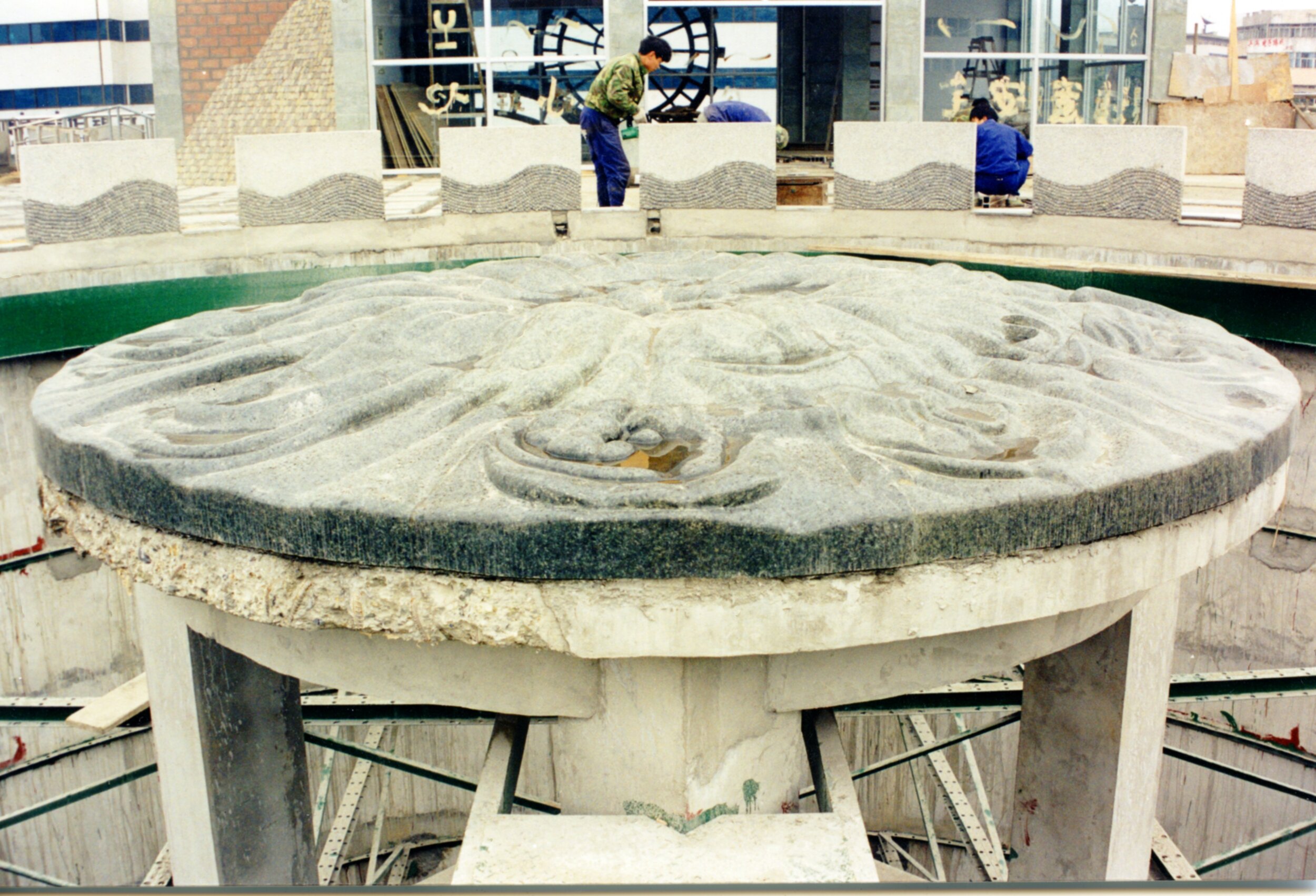Living Water Garden
Chengdu, China • 1998
“[Betsy’s] largest project to date is the Living Water Garden in the city of Chengdu, China, an ecological park that diverts polluted water from the Fu and Nan rivers into a wetland filtration system, from which it emerges clean enough to drink.
—Alex A. Jones, The Brooklyn Rail
More about the Living Water Garden
The Living Water Garden, located in the city of Chengdu in Sichuan Province, China, was the first inner city ecological park in the world with water as its theme. The 5.9-acre (2.4 ha) public park is located on the Fu and Nan rivers, an ancient river diversion system designed and constructed in 250 B.C.. The vision of environmental artist and founder of Keepers of the Waters Betsy Damon, this international award-winning park is a fully functioning water treatment plant, a giant sculpture in the shape of a fish (symbol of regeneration in Chinese culture), a living environmental education center, a refuge for wildlife and plants, and a wonderful place for people. Since its completion in 1998, it has become the most popular park in the city and is on the national tourist registry.
It was built by The Chengdu Fu & Nan Rivers Comprehensive Revitalization Project, a five-year plan to rebuild Chengdu's infrastructure to support its growing population for the next 200 years. Each day, 200 cubic meters of polluted river water move through the natural treatment system and emerge clean enough to drink. This amount of water is not enough to affect the river water quality as a whole; its purpose is teaching and inspiration, which it does very successfully. Visitors can walk everywhere in the park, delighting in the many birds, butterflies and dragonflies that have taken up residence there and observing the once dead river water become alive again. Because of the visible and understandable treatment system, people can clearly see the water becoming cleaner and cleaner.
Other features of the park include an underground parking garage, environmental education center, and a circular stone amphitheater facing the river for concerts and other activities. There is also an extensive forested areas made up of more than 100 different plant species (some rare) to represent the biodiversity on Mt Emei, a sacred Buddhist mountain located 160 kilometers outside Chengdu. There are also two places where steps replaced the floodwall, giving visitors a way to reach the river.
Margie Ruddick was the landscape architect for this project. Her invaluable work in sizing the elements of the park is greatly appreciated.









































